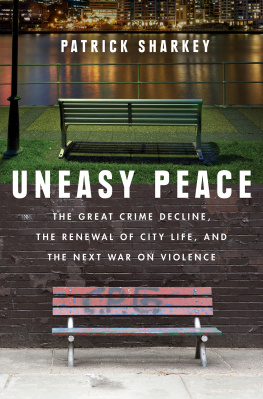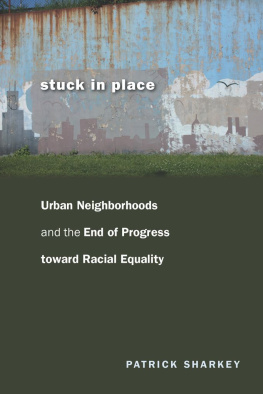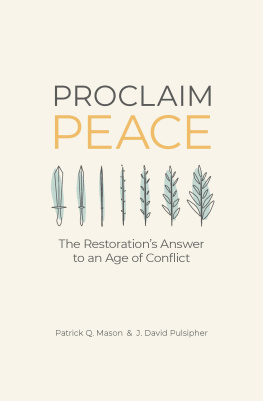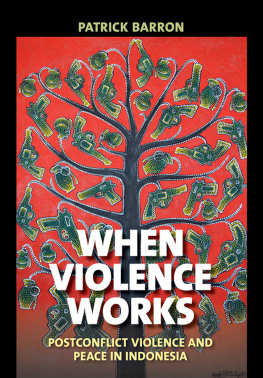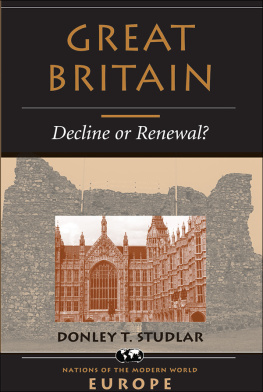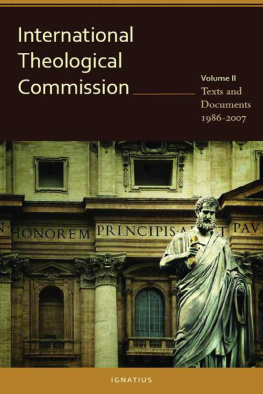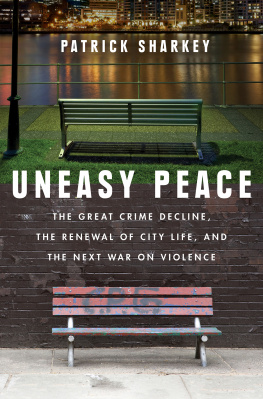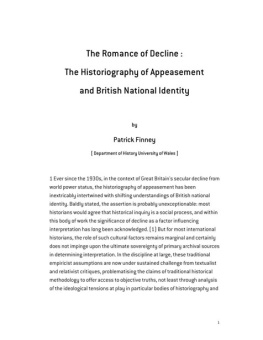Patrick Sharkey - Uneasy peace: the great crime decline, the renewal of city life, and the next war on violence
Here you can read online Patrick Sharkey - Uneasy peace: the great crime decline, the renewal of city life, and the next war on violence full text of the book (entire story) in english for free. Download pdf and epub, get meaning, cover and reviews about this ebook. year: 2018, publisher: W.W. Norton & Co., genre: Politics. Description of the work, (preface) as well as reviews are available. Best literature library LitArk.com created for fans of good reading and offers a wide selection of genres:
Romance novel
Science fiction
Adventure
Detective
Science
History
Home and family
Prose
Art
Politics
Computer
Non-fiction
Religion
Business
Children
Humor
Choose a favorite category and find really read worthwhile books. Enjoy immersion in the world of imagination, feel the emotions of the characters or learn something new for yourself, make an fascinating discovery.
- Book:Uneasy peace: the great crime decline, the renewal of city life, and the next war on violence
- Author:
- Publisher:W.W. Norton & Co.
- Genre:
- Year:2018
- Rating:5 / 5
- Favourites:Add to favourites
- Your mark:
- 100
- 1
- 2
- 3
- 4
- 5
Uneasy peace: the great crime decline, the renewal of city life, and the next war on violence: summary, description and annotation
We offer to read an annotation, description, summary or preface (depends on what the author of the book "Uneasy peace: the great crime decline, the renewal of city life, and the next war on violence" wrote himself). If you haven't found the necessary information about the book — write in the comments, we will try to find it.
Patrick Sharkey: author's other books
Who wrote Uneasy peace: the great crime decline, the renewal of city life, and the next war on violence? Find out the surname, the name of the author of the book and a list of all author's works by series.
Uneasy peace: the great crime decline, the renewal of city life, and the next war on violence — read online for free the complete book (whole text) full work
Below is the text of the book, divided by pages. System saving the place of the last page read, allows you to conveniently read the book "Uneasy peace: the great crime decline, the renewal of city life, and the next war on violence" online for free, without having to search again every time where you left off. Put a bookmark, and you can go to the page where you finished reading at any time.
Font size:
Interval:
Bookmark:

This book is a synthesis of observations, findings, and ideas that emerged through conversation, collaborative analysis, and written correspondence with a large group of mentors, colleagues, friends, family members, and students. I am grateful to all of them.
That group begins with Robert Sampson, who has been a continual source of inspiration, guidance, and insight since I began working with him in my second year of graduate school. We have discussed many of the ideas that made their way into this book, we wrote an article together that helped me clarify my own thinking about the relationship between violence and inequality, and his comments on the first draft had an enormous impact on the final version. I thank Rob first and foremost.
The scholars who came together at the NYU School of Law in 201213 provided extensive feedback at an early stage of the project, and Im grateful to all of them and to Ingrid Ellen and Vicki Been for inviting me to spend the year with such an extraordinary group of people. I carried out much of the empirical analysis that went into the book during my time as a William T. Grant Faculty Scholar, under the mentorship of Larry Aber, Martha Farah, and Peter Bearman. I thank all three as well as other faculty scholars who discussed the ideas in the book with me, including David Deming, Stefanie DeLuca, Phil Goff, Elizabeth Oltmans Ananat, Sara Goldrick-Rab, and Candice Odgers. Several colleagues and friends provided particularly helpful thoughts on early drafts of chapters or the full manuscript, including Harry Blagg, Leah Platt Boustan, Stuart Butler, Eric Cadora, Charles Clotfelter, David Edwards, Ingrid Ellen, Elizabeth Glazer, Stuart Greer, Eric Klinenberg, Desmond King, Susan Lloyd, Jens Ludwig, and Mary Pattillo, as well as my parents, Eileen and Tom Sharkey. I would also like to thank Alison MacKeen of Sterling Lord Literistic and Alane Mason of W. W. Norton for their sharp insight and extensive effort in working with me to improve the manuscript.
Special thanks go to the doctoral students and undergraduates who assisted in gathering and analyzing data that became the foundation of the book. Gerard Torrats-Espinosa, a doctoral student at NYU, has been an integral part of much of the research. Most notably, he collaborated with me on the analysis of violent crime and economic mobility featured in .
Michael Friedson collaborated on the study of neighborhood-level trends in violent crime featured in . All these students provided excellent research assistance.
I would like to thank Susan Lloyd and John Gurda for their help in organizing my visit to Milwaukee and for their insights into the city. My conversations with Sharon Adams, Mayor Tom Barrett, Victor Barnett, Linda Bowen, District Attorney John Chisholm, Chief Edward Flynn, Mike Gousha, David Haynes, Carmen Pitre, Sister Patricia Rogers, Lauren Wechsler, and the group of organization leaders and community leaders were extremely helpful in illuminating the issues and the challenges facing Milwaukee. I thank everyone I met for taking out the time to introduce me to your city.
Harry Blagg was especially helpful in facilitating my trip to Perth, and his insights into the role of Aboriginal patrols provided the basis for my description in . I thank Maria McAtackney and Michael Wood for talking with me about Nyoongar Outreach Services, and Annie, Rachel, and the patrol staff for letting me observe the extraordinary work they are doing in Northbridge.
Last, thanks to Thomas and Kate for being such great kids, and to Alyssa, to whom this book is dedicated, for being such a wonderful person.
ALSO BY PATRICK SHARKEY
Stuck in Place:
Urban Neighborhoods and the End of Progress Toward Racial Equality
Spatial Foundations of Inequality
(coedited with George Galster)
O n October 12, 1977, television viewers across the nation were given a glimpse of life in the South Bronx. Game two of the 1977 World Series was being broadcast from Yankee Stadium, where the New York Yankees hosted the Los Angeles Dodgers. When Yankees second baseman Willie Randolph stepped to the plate to lead off the bottom of the first inning, the camera cut to an aerial view of the streets surrounding the stadium and focused the attention of the viewing audience on an enormous blaze that appeared to be consuming an entire block of the city.
Legend has it that Howard Cosell, the sportscaster with the iconic halting voice, described the scene to viewers in his matter-of-fact manner: Ladies and gentlemen, the Bronx is burning. The truth is, he never uttered those words. Cosells broadcast partner, Keith Jackson, was the one who first spoke when the camera showed the images of the scene less than a mile from the stadium: That is a live picture, obviously a major fire in a large building in the South Bronx region of New York City. shot high in the air, illuminating a full block in a section of the city that otherwise appeared to be pitch-black, lifeless. Jackson, whose own voice had the natural urgency of a live on-the-scene reporter, was audibly stunned: My goodness, thats a huge blaze.
The broadcast returned to the scene five times over the course of the game. Each time Jackson and Cosell marveled at the sight of the fire, providing updates on the effort to control it and assurances that no one had died. More than two hours into the game, in the bottom of the sixth inning, the last report showed that the blaze had finally been extinguished.
The fire that broke out during game two stunned the nation, but the sight of burning buildings was not unusual in the South Bronx. During a period in which New York City was shedding jobs and people, the value of real estate in the Bronx plummeted, and landowners were desperate to extract some value from their property. Dozens of neighborhoods across the Bronx lost more than half of their real estate to arson, and the community began to look as if it were the target of an aerial bombing campaign.
The spectacle of a burning city may have evoked fascination and terror among viewers, but the nationally televised fire was just one relatively minor episode in a year of chaos, violence, and destruction in the South Bronx. In the 1970s this devastated section of New York City had morphed from a traditional poor, urban ghetto into a national symbol of urban blight, violence, disorder, and lawlessness.
The Bronx was the place where the serial killer David Berkowitz, who called himself Son of Sam, roamed the streets for months, picking out victims at random and sending notes to newspaper columnists daring the police to find him. Berkowitz killed three of his victims in the Bronx during that summer of 1977, and several more in Queens, stoking the fears of New Yorkers as
The South Bronx came to be seen as a national disaster, the most notorious section of a city that had reached the brink of bankruptcy in 1976. Less than a week before the World Series began, the New York Times ran a front-page photograph showing President Jimmy Carter and several advisers touring a barren stretch of Charlotte Street, just east of Yankee Stadium. Carter and his aides looked as if they had stumbled upon a postapocalyptic ghost town, a desolate landscape littered with piles of rubble, beer bottles, scattered newspapers, and dirt. A week later, when the fire broke out in the first inning of game two, Howard Cosell noted the irony: Thats the very area where President Carter trod just a few days ago.
In 1977 the South Bronx became the most visible example of the failed American city. The neighborhood would become the setting for novels and films dramatizing the dystopia of postindustrial urban life, and the dominant feature of the new urban landscape was violence. Spike Lee captured the chaos of 1977 in his film
Next pageFont size:
Interval:
Bookmark:
Similar books «Uneasy peace: the great crime decline, the renewal of city life, and the next war on violence»
Look at similar books to Uneasy peace: the great crime decline, the renewal of city life, and the next war on violence. We have selected literature similar in name and meaning in the hope of providing readers with more options to find new, interesting, not yet read works.
Discussion, reviews of the book Uneasy peace: the great crime decline, the renewal of city life, and the next war on violence and just readers' own opinions. Leave your comments, write what you think about the work, its meaning or the main characters. Specify what exactly you liked and what you didn't like, and why you think so.

